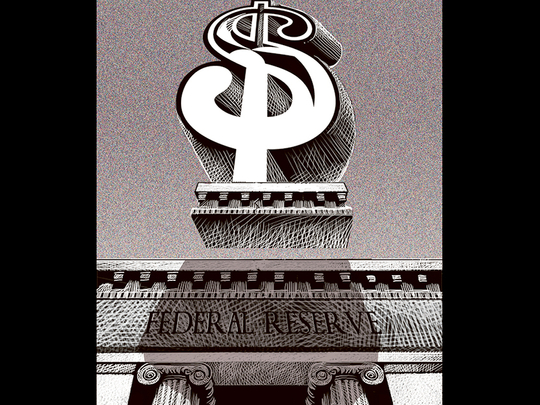
Over the last two weeks, markets have again confounded any attempt to explain their short-term gyrations by looking at historical patterns, in particular by focusing on the influence of central banks.
First, there was a counter-intuitive sell-off in risk markets in response to a relatively dovish signal from the Federal Reserve, the world’s most powerful central bank, which left interest rates unchanged at its September meeting. Then, equally unusual, markets rallied a week later, after Fed Chair Janet Yellen delivered a more hawkish message.
These days, markets seem to be most influenced by investor sentiment that swings between two extremes. At one end is a focus on the Fed’s signals about the US and global economies; and, at the other end, concerns about the potential effects an interest rate change could have on the dollar, financial flows, risk appetite and the structurally fragile emerging markets.
This pendulum swing is inherently volatile and makes markets and policymakers vulnerable to flip-flops, real and perceived.
In this context, the Fed’s decision not to hike rates at its policy meeting last month was interpreted as an expression of concern about economic prospects. That implied message had the effect of subduing the appetite for risk, which offset the fact that the central bank had postponed again any decision to gradually ease its foot off the stimulus accelerator.
That contributed to an environment in which markets welcomed the slightly more hawkish rhetoric from Yellen that followed a week later.
Stronger dollar
Yet the Fed easily could find itself confronting markets that quite suddenly worry more about the effects of a rate hike than about its signalling. Of particular concern are the risks that a stronger dollar could erode competitiveness, a scaling back of leveraged positions by investors, and the possibility that patchy liquidity and volatility-based investment strategies could amplify the turmoil.
These risks demonstrate the difficulties faced by the Fed in balancing the domestic case for rate normalisation against a global economy that isn’t propitious for such a move. This complicates the central bank’s goal of gradually raising rates as it continues a delicate and measured exit from “unconventional policies”, including quantitative easing, which was introduced amid the 2008 global financial crisis and ended last October.
But the benefits of prolonging these policies could well be outweighed by collateral damage and unintended consequences that they entail.
A particular reason for caution is that these exceptional measures have conditioned financial markets to develop a deep dependence on the central bank as a suppressor of financial volatility and a booster of financial asset prices.
Exiting this trading-policy paradigm and, more importantly, doing so in a way that achieves an orderly reconciliation of the seemingly contradictory factors at play, will be tricky, though not impossible. That result would best be achieved with a significant pickup in economic activity, particularly outside the US, which would allow for a gradual normalisation of interest rates amid improving economic and corporate performance.
Market fundamentals
If validated by high economic growth, the end of a multi-year rise in financial asset prices that was largely underpinned by the Fed’s actions would compel markets to return to a heavier, and more sustainable, reliance on economic fundamentals. That switch, in turn, would materially reduce the disorderly risk from financial deleveraging and the weakened intermediation role of broker-dealers.
Unfortunately, despite some exciting innovations and the availability of large sums of cash now sitting on the sidelines, there is little to suggest that a pickup will materialise any time soon. If anything, the balance of risks points to a self-fuelling deceleration of growth, especially in the emerging world.
Yet Fed officials are far from powerless. They can buy time by being more disciplined and united in shifting inherently short-term and jumpy market participants away from an obsession about the timing of the first rate increase and toward a greater focus on where the hiking cycle will end.
There is nothing in the domestic or international environment to suggest that the coming interest rate cycle will share many features with previous ones. The pace and spacing of the gradual increases will not follow a historical pattern characterised by sequential hikes at Open Market Committee meetings.
Instead, it is likely that an unusually irregular path of rate increases will have an endpoint notably below historical rate averages. And given the uncertainties of this period of secular economic stagnation in advanced economies and the effects of experimental monetary policies, there is a strong likelihood of occasional policy reversals along the way.
Financial inconsistencies
By successfully managing market expectations to redirect the focus toward what is likely to be the “loosest tightening” in the central bank’s modern history, the Fed would reduce the considerable potential for financial market volatility in the short term. But it would not decisively resolve the underlying economic and financial inconsistencies that could cause market instability and adverse spillovers onto the real economy.
Only a sustainable acceleration of economic growth could achieve that stability. To enable that growth, central bankers will need other policymakers to come off the sidelines and use political and legislative tools to improve demand conditions, promote pro-growth structural reforms, lift crippling pockets of over-indebtedness, and revamp struggling regional and multilateral economic institutions and structures.
The writer is chief economic adviser at Allianz, chairman of President Obama’s Global Development Council and former CEO and co-chief investment officer of Pimco.












